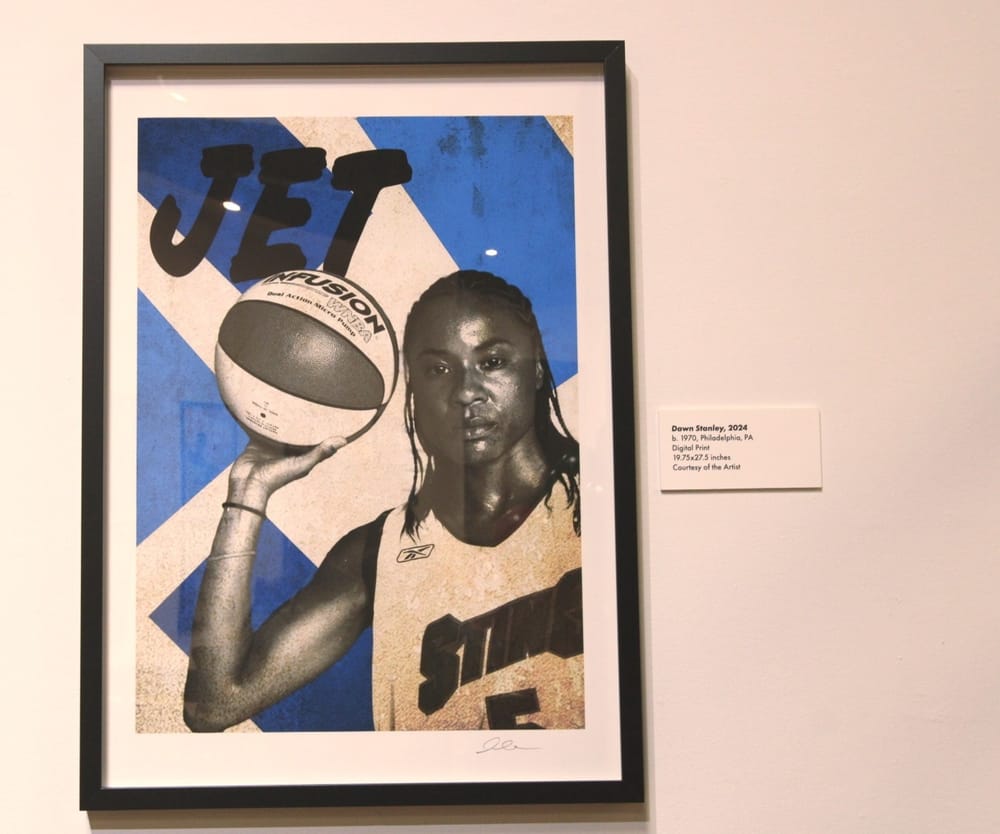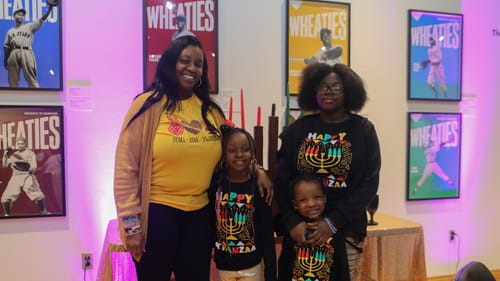Stay in the Loop
BSR publishes on a weekly schedule, with an email newsletter every Wednesday and Thursday morning. There’s no paywall, and subscribing is always free.
Reimaging Jet magazine covers with Black Philly-area icons
The African American Museum in Philadelphia presents Shaheed Rucker: (re)Covering the Iconic

The African American Museum in Philadelphia (AAMP) maintains its lead in showcasing Black cultural art within the Greater Philadelphia region with Shaheed Rucker: (re)Covering the Iconic. Shaheed Rucker, a former creative director for Jet magazine, constructs images in the style of vintage Jet and Wheaties box covers to highlight key African Americans in the Philadelphia region, past and present.
As I was growing up in the 1980s, Jet magazine (founded in 1951) was ALL THAT and a bag of chips. Pre-Internet and pre-social media, if you wanted to know about the latest in Black celebrity culture, Jet's weekly publication was the way to go. Because mainstream media avoided portraying the Black middle class, magazines like Jet and Ebony helped African Americans see the success within their culture. We KNEW we were killing it, even if others thought otherwise. The magazine covered entertainment, business, and politics. During my childhood, it featured a “beauty of the week” and the top 10 singles of Black musicians.
Midcentury Modern inspirations
Rucker's exhibition continues Jet’s focus on Black culture by spotlighting Black figures within the Philly region from the 19th century to today, successfully recreating the look and feel of mid-century Jet covers. His exhibition enlarges and superimposes pre-existing black-and-white prints on multi-colored backgrounds.
While Jet's look modernized in the 1970s and 1980s, Rucker leaned toward the 1960s template pioneered by Jet's art director during that time, Herbert Temple, and his Midcentury Modern aesthetic. “As an artist, I was intrigued with how simple but complex the original Jet covers were during [that time],” Rucker told me by email. He was drawn to bright-colored backgrounds with layered shapes and a black-and-white subject: “It was the perfect contrast.”
Spotlighting Philly figures
Many of the portraits on view at AAMP showcase African American figures who existed before the magazine’s inception, like Meta Vaux Warrick Fuller, who graduated in 1898 from the Pennsylvania Museum School of Industrial Art (which later became UArts), and Philly-born philosopher Alain Locke. He also acknowledges celebrities who did not live long enough to grace the covers, like Philly singer Tammi Terrell of “Ain’t No Mountain High Enough” fame, who rejected a UPenn acceptance and died at age 24. Rucker highlights figures from Pennsylvania, including the Greater Philadelphia area, and New Jersey, like Dawn Stanley, Wilt Chamberlain, photographer and UArts alumna Deborah Willis, Cecil B. Moore, Pittsburgh’s August Wilson, and Philly native Billie Holiday.
Rucker smartly uses his exhibition to honor those forgotten by mainstream society, including members of the National Negro League. Although Wheaties sponsored minor-league baseball, it did not recognize Negro League champions until 1996. Rucker rectifies this mistake with action shots of the players who served on the Philadelphia Stars between 1933 and 1952.
AAMP Pew curatorial fellow Michael Wilson and AAMP vice president of curatorial services Dejay Duckett were likewise committed to highlighting influential yet unsung people in different fields, Rucker said: “It’s important for people to know their work doesn’t go unnoticed, whether big or small. I want people to feel proud of themselves and be inspired to impact Philadelphia life in great ways.”

A worthy visit for MLK Day
2024 put Philadelphia on the map for displaying Black art, including Jomo Tariku at Wexler Gallery, The Time Is Always Now at the Philadelphia Museum of Art, and Mickalene Thomas at the Barnes. Meanwhile, with the Rucker exhibition, CCH Pounder’s Shared Vision collection (on view through Sunday, March 2, 2025), and the virtual Pearl Bailey Showcase, AAMP continues to distinguish itself while spotlighting fresh yet significant work.
I urge people to experience Shaheed Rucker, as Jet magazine is currently in limbo. When I hit college, Jet felt slightly dated. It went digital in 2014, but in 2016, it was sold to the Clearview Group. Currently, the website and Instagram account are sparsely populated. What Rucker creates remains significant. Jet and Ebony magazines were a critical part of the Civil Rights Movement and every single Black household. With contemporary networks pulling shows with Black leads, Black people in America need something to look to where we are at the forefront in a positive capacity, showcasing our educational and social achievements.
In honor of Rev. Dr. Martin Luther King Jr.’s birthday, AAMP is offering reduced admission from January 17-20, 2025.
At top: Shaheed Rucker’s 2024 portrait of Dawn Stanley in the style of a vintage Jet cover. (Photo courtesy of AAMP.)
What, When, Where
Shaheed Rucker: (re)Covering the Iconic. Through July 13, 2025, at the African American Museum in Philadelphia, 701 Arch Street, Philadelphia. (215) 574-0580 or aampmuseum.org.
Accessibility
AAMP is a wheelchair-accessible venue. For specific access needs, contact the museum at (215) 574-0380.
Sign up for our newsletter
All of the week's new articles, all in one place. Sign up for the free weekly BSR newsletters, and don't miss a conversation.

 An Nichols
An Nichols